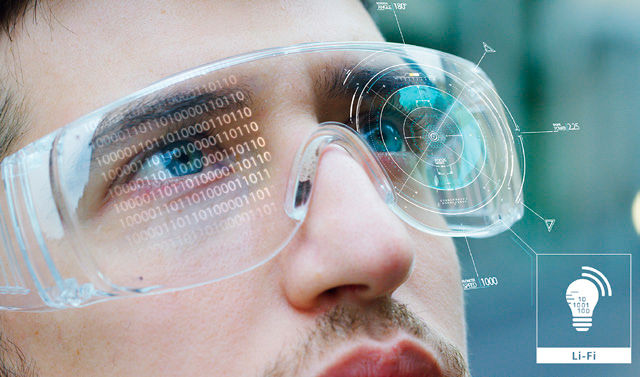Li-Fi meets augmented reality
Optical communication using visible or infrared light – Li-Fi (Light Fidelity) – is currently being advanced at Fraunhofer IPMS and prepared for applications in the field of augmented reality, among others. The advantages of optical data transmission come into play above all when cables and connectors cause interference or wireless radio networks such as Wi-Fi or Bluetooth reach their limits in terms of bandwidth or realtime capability.
This is the case, for example, with data glasses or augmented reality (AR) glasses. In addition to the perception of the real environment, augmented reality glasses provide the user supplemental information superimposed on their field of view. Such glasses are used in areas like warehousing and logistics, assembly and product development, and medical technology. Depending on the application, large amounts of data need to be transferred and interactive content resulting directly from a user's actions must be available within a certain period of time. Because cables restrict movement and users of mobile applications typically need to have their arms free, wireless data transfer techniques are the preference for installation in AR glasses. The usual standards such as Wi-Fi and Bluetooth are, however, limited in bandwidth and not designed for realtime transmission – unlike Li-Fi.
As long as there is a clear visual axis between the transmitting and receiving modules, optical data transmission can be used wherever connectors, cables, sliding contacts, and radio networks need to be replaced.
Last modified:
